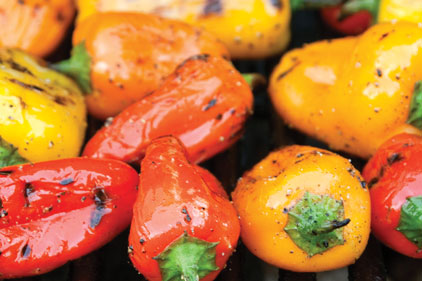The researchers say brightly colored natural foods including tomatoes, broccoli and berries are rich in phytochemicals, a compound that has been found to have cancer-fighting properties.
One food source that may be helpful in cancer prevention is abundant in Ohio: soybeans. The problem is, most people don’t like the taste of soy.
“Many Americans don’t like the taste of soy itself, such as in a traditional Asian food like tofu, so we’re also using advanced food technology and processing to create new cancer-fighting combinations that can be used in clinical trials for specific cancers,” said Steven Clinton, program leader of molecular carcinogenesis and chemoprevention at OSUCCC-James. “Our team is thinking of food in a new way, utilizing traditional plant breeding to create new strains that boost a food’s natural anti-cancer compounds.”
He said that at the James some prostate cancer patients in clinical trials are testing the center’s soy-tomato juice and soy-almond bread to see if they have enhanced anti-cancer properties.
In keeping with food’s connection to cancer, patients, survivors and other community members have started a new Survivors Garden, a two-acre farm on Ohio State’s agriculture campus where vegetables and fruits are grown.
The program started last spring to enhance education efforts for patients and the community. Gardeners also learn from hospital chefs and dieticians how to make the most of each food they harvest.
“An experience with cancer can be turned into a very teachable moment,” said Clinton. “It’s a time when folks really do re-evaluate their lifestyle, diet and nutrition.”
Ohio State researchers want to stress the benefits of fruits and vegetables that go beyond their nutrients.
Clinton said the phytochemicals being studied work many ways to impact health, such as antioxidants, anti-inflammatories and immune system regulators, for example.
“Eating a variety of fruits and vegetables, a rainbow of colors, will help these various phytochemicals work together and promote health,” said Clinton.
Also, in September a group of five Ohio- and Indiana-based cooperatives launched a new program called Growing the Cure, which encourages a collaborative effort to fund food research for cancer prevention.
“(The) three sturdy legs ... important in cancer research (are) prevention, early detection and treatment. All three aspects must work together to gain success in finding a cure,” said Clinton.
